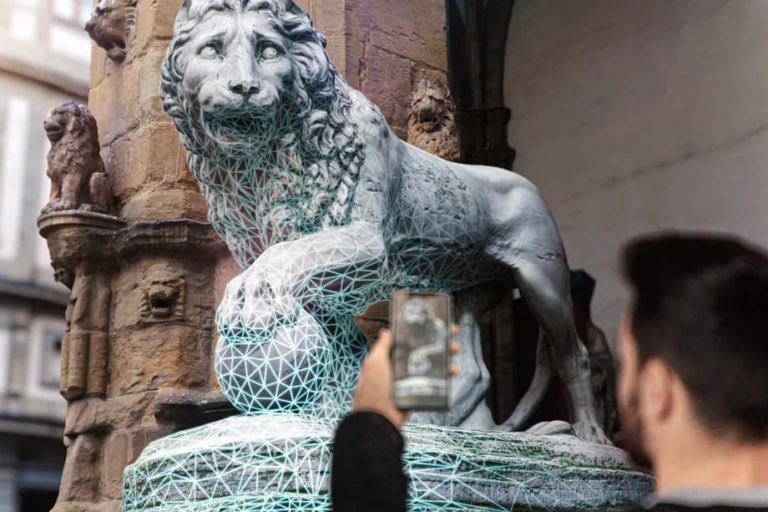
The past few months have seen the standard run of summer developer conferences. Some featured AR platforms include Apple (ARkit), Google (ARCore), and Niantic (Lightship). So we’re synthesizing the top AR updates for our XR Talks series (video and takeaways below).
After Google and Apple’s AR platform updates, we move on to Niantic. It recently announced Lightship VPS. Short for visual positioning system, it includes an AR development kit (ARDK) – a spin on an SDK – bringing geospatial AR and “real-world metaverse” capabilities to developers.
What is the real-world metaverse? Though the prevailing metaverse connotation is 3D synchronous online worlds, a separate AR track involves digital content that adds depth and meaning to the physical world (a.k.a., metavearth). That second track could hold more value.
So Lightship VPS represents Niantic’s real-world metaverse play, enabling developers to build Pokémon Go-like geospatial experiences. The idea is to package up Niantic’s architecture and spatial mapping capabilities into a developer kit, thus accelerating AR developer efforts.
Who Will Build the Metavearth?
Visual Signals
Going deeper on Lightship VPS, it builds on the concept of a visual positioning system. Rather than GPS satellite data, it uses visual signals in the world around us to localize a given device. Once that device knows where it is and what it’s looking at, it can infuse the right digital content.
Niantic isn’t the only one developing this principle. Google’s Live View 3D navigation localizes devices using Street View Imagery. Object recognition from its Street View database can inform a device where it is and in what direction it’s pointing, thus enabling 3D wayfinding overlays.
That gives Google a meaningful edge in developing VPS-based navigation. So how will Niantic gain that level of visual data in its VPS system? The answer is its players. For a few years, it’s been crowdsourcing the development of spatial maps as Pokémon Go players do their thing.
With Lightship, it hopes to scale up these efforts and gain more comprehensive spatial maps through several apps. This works towards what Niantic calls planet-scale AR. And it’s well on its way, given more than 30,000 VPS-activated locations globally, with centimeter-level precision.
All these efforts are further amplified by the fact that Niantic is reducing app activation energy. With its recent 8th Wall acquisition, it brings all of the above to easier-to-launch web AR. That could engender greater participation, thus scaling up its ongoing spatial map construction.
AR Platforms Speak, Part 2: Google
Computational Understanding
Beyond just scaling its platform, Lightship is meant to bring more functionality to geospatial AR. It represents the next evolution in UX, beyond what Pokémon Go has offered. As AR purists often argue, Pokemon Go’s graphical UX isn’t “true AR” as much as it is “floating stickers.”
The idea is to gain more location-relevant and precise digital interactions in the real world. And that starts by gaining greater computational understanding of a device’s surroundings. This includes geometric as well as semantic understanding (knowing that a tree is a tree).
The other big evolution is multiplayer support. With more robust spatial maps, several users can interact with the same digital elements. Precise spatial maps are needed for those interactions to work and for content to be geo-anchored for synchronous multiplayer action.
To that end, these developments bring Niantic something it didn’t have before: network effect. Pokémon Go is a social experience in that people play it in hordes. But the actual heads-down gameplay is a one-player endeavor. Multiplayer support unlocks new possibilities.
This social angle was further amplified through Niantic’s other big announcement: Campfire. This is a social network that formalizes and federates player social activity that was already happening in places like Discord. It’s a logical step for Niantic and a good business move.
We’ll pause there and cue the full video below which includes several other elements such as Lightship VPS technical capabilities, and 8th Wall’s role in bringing it all to web AR…






